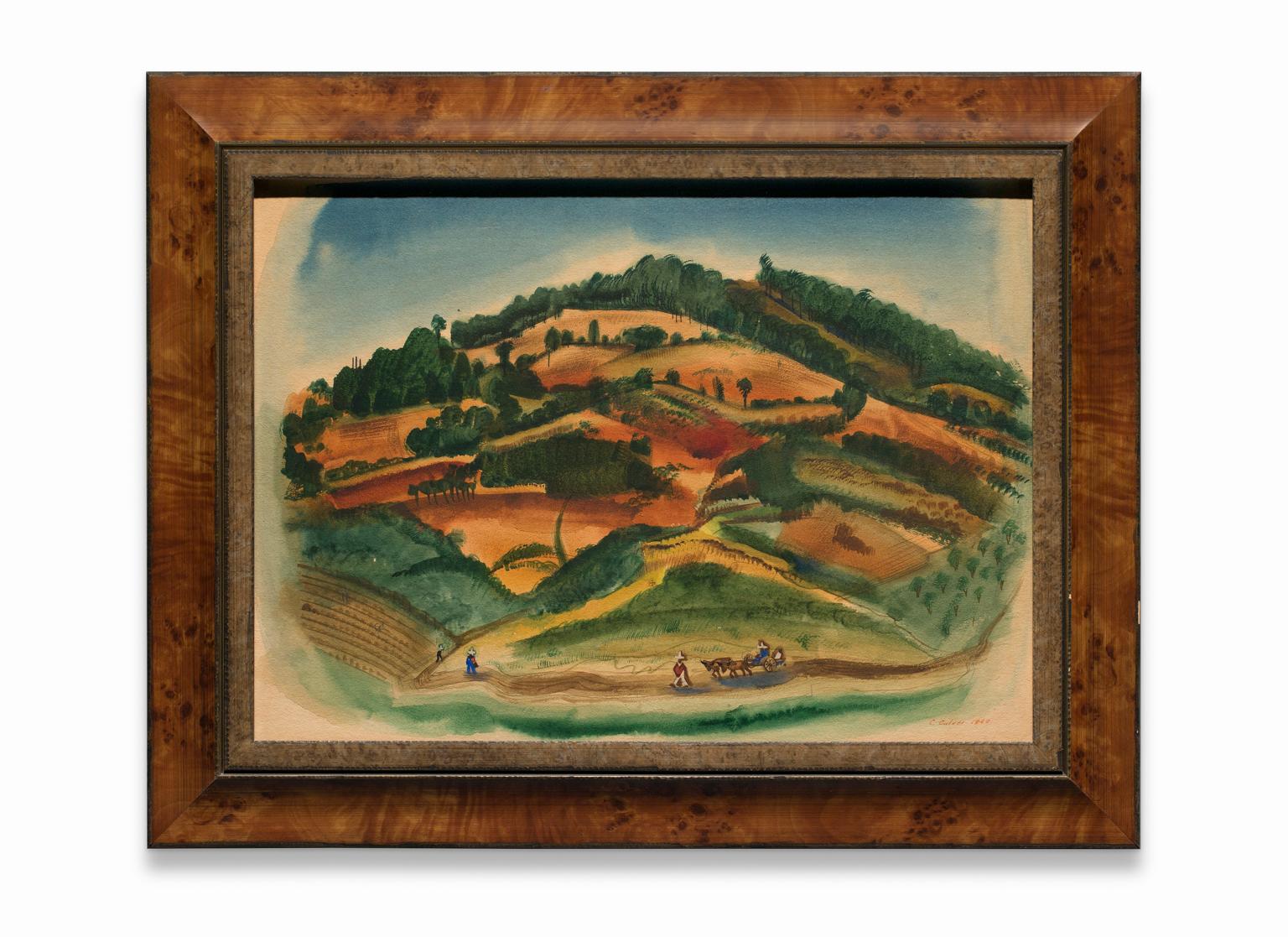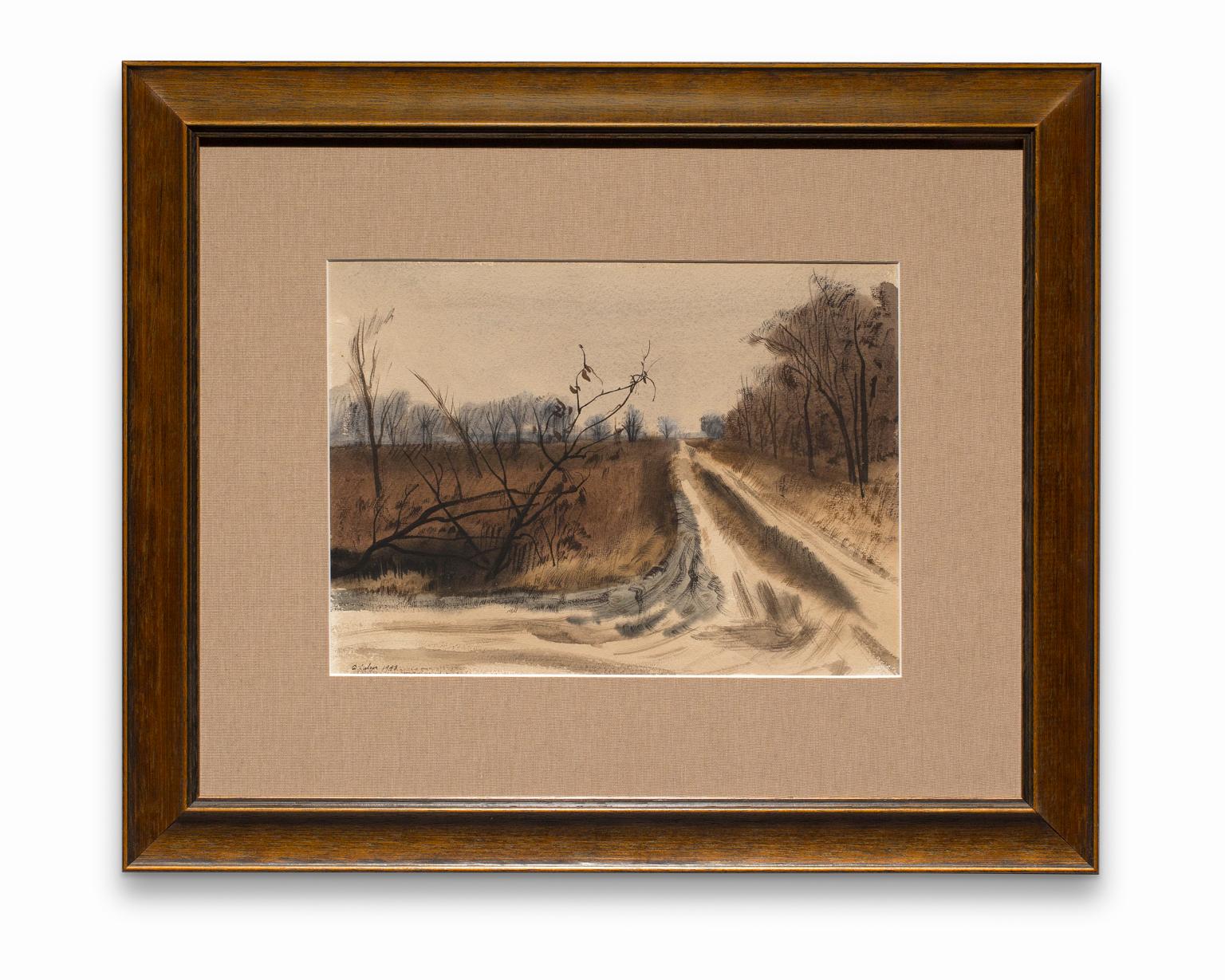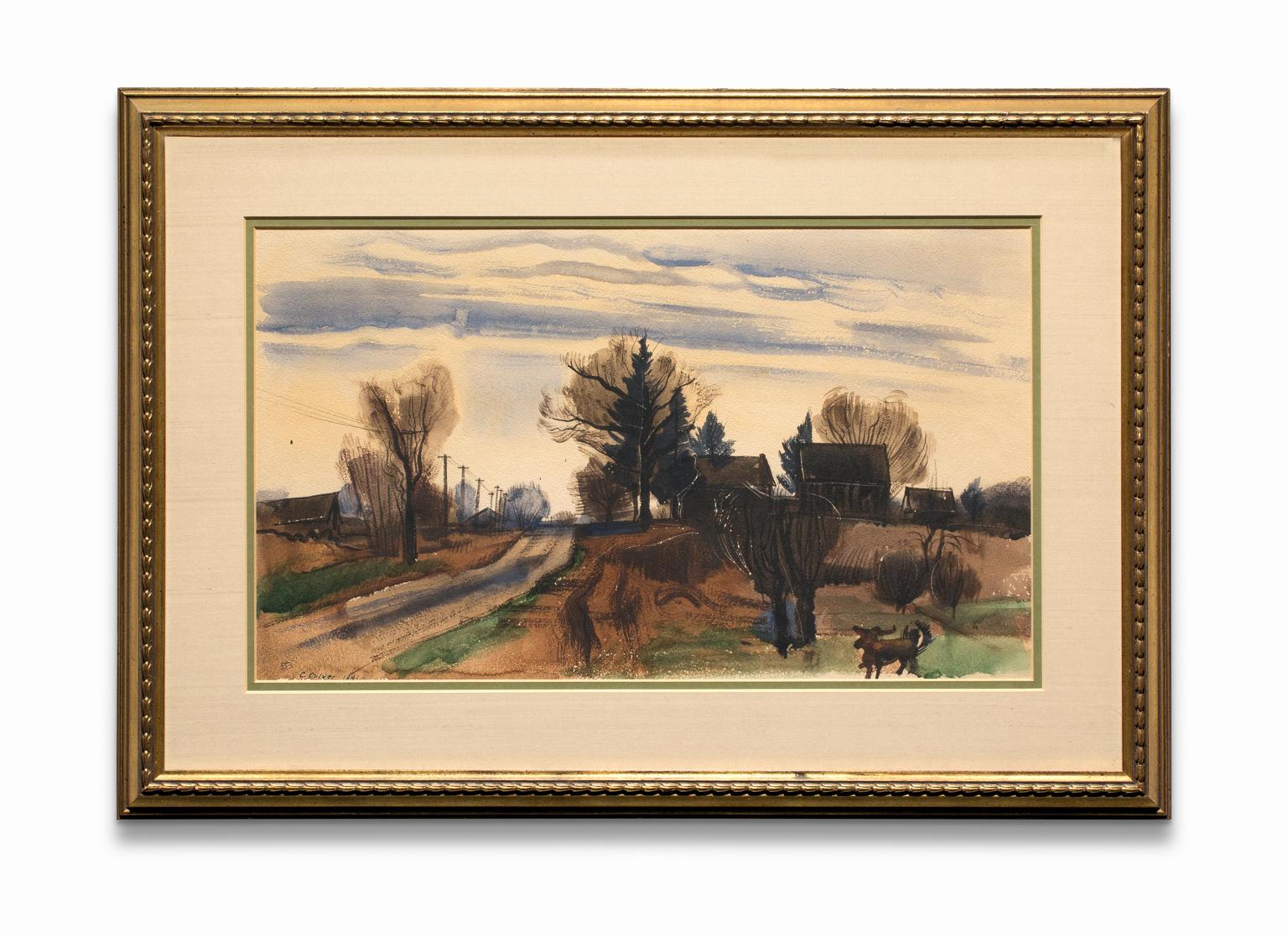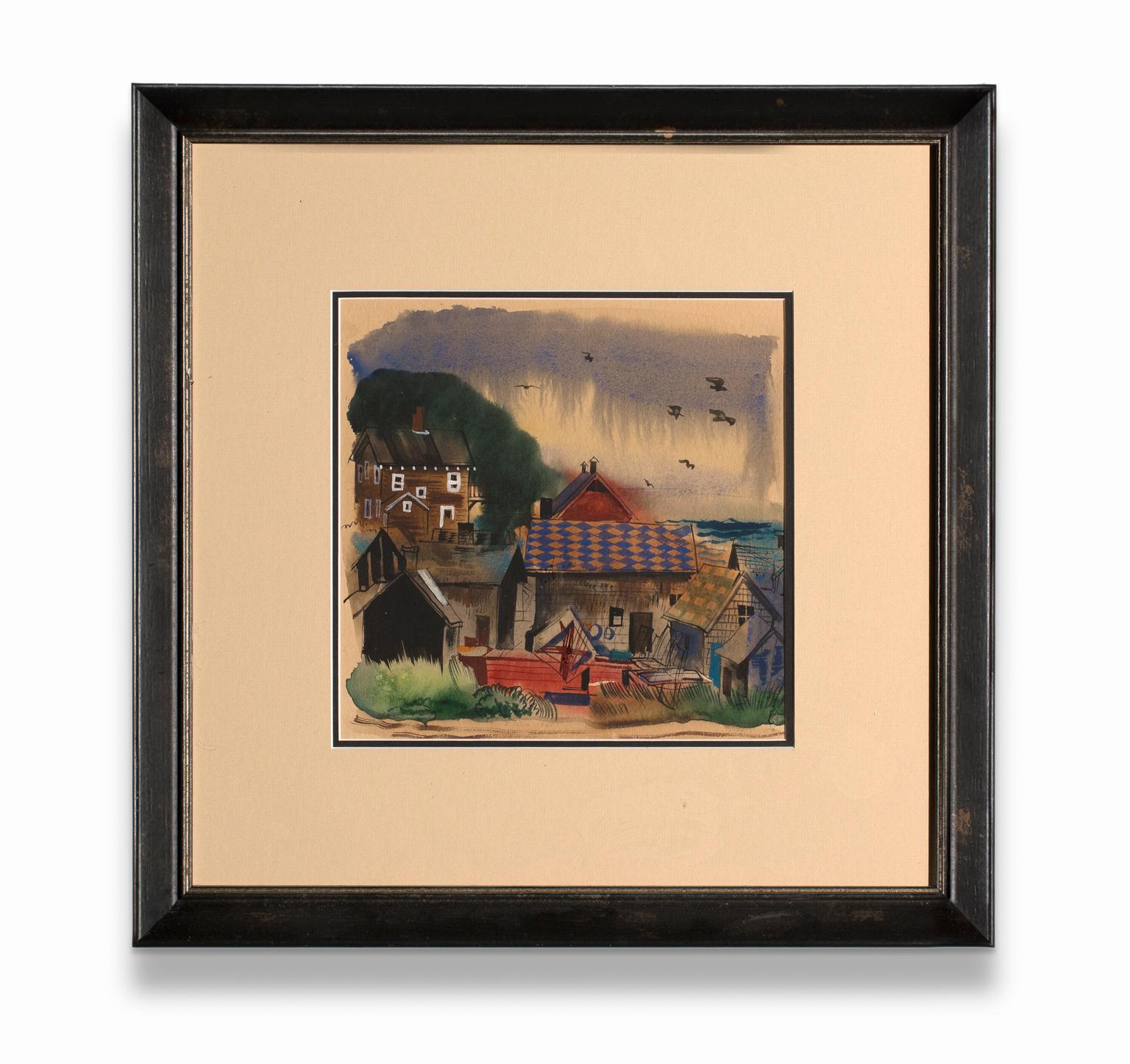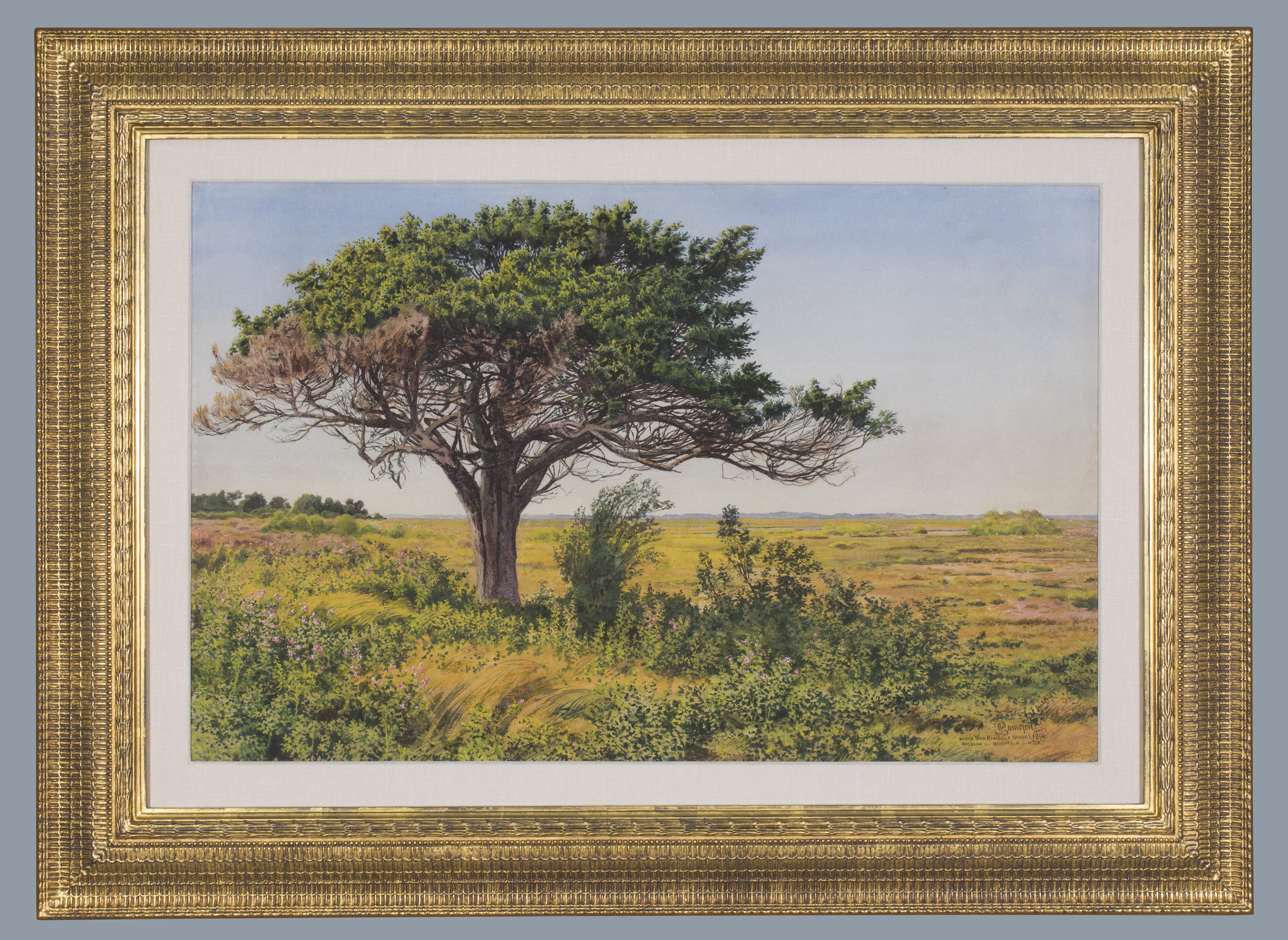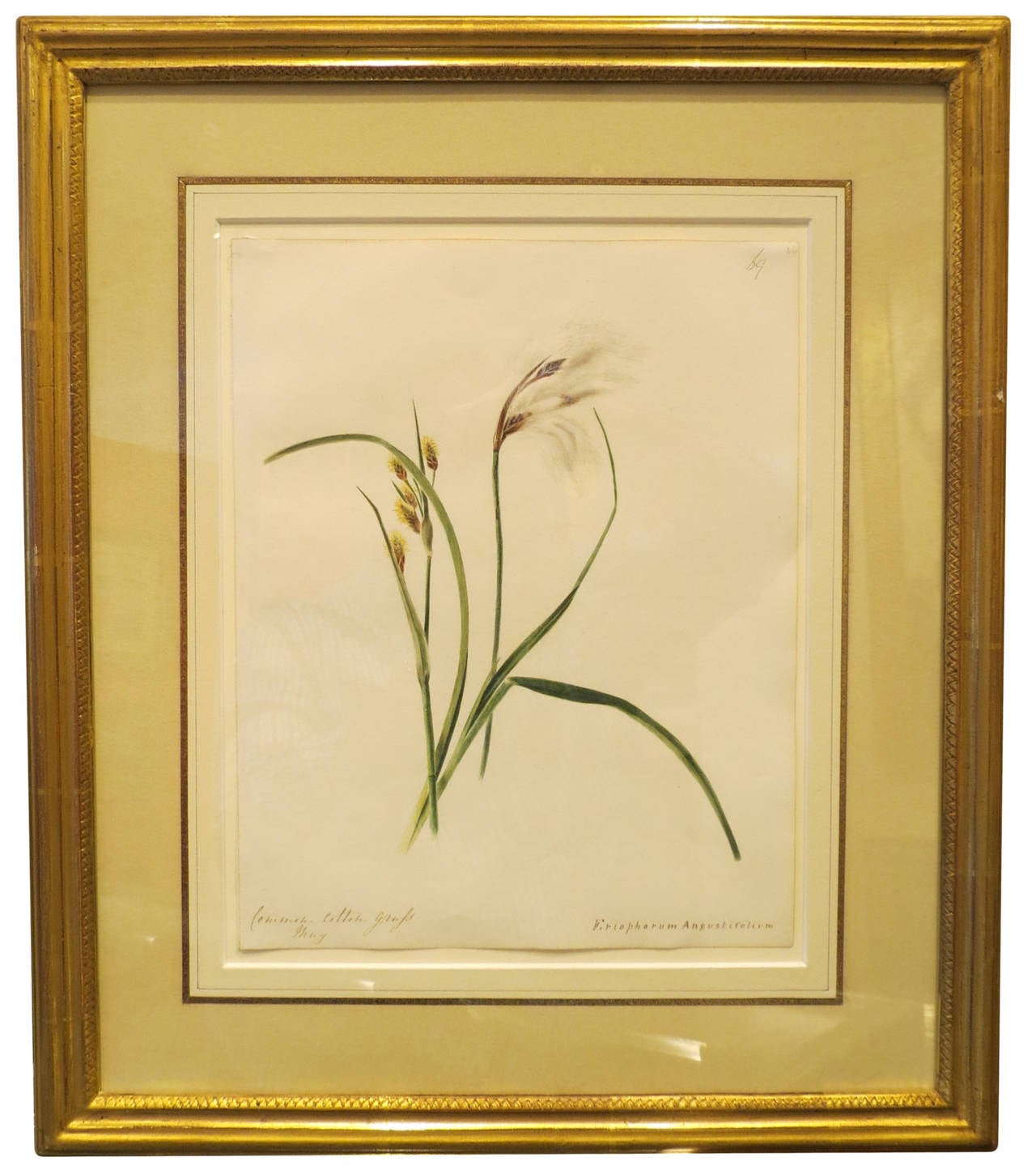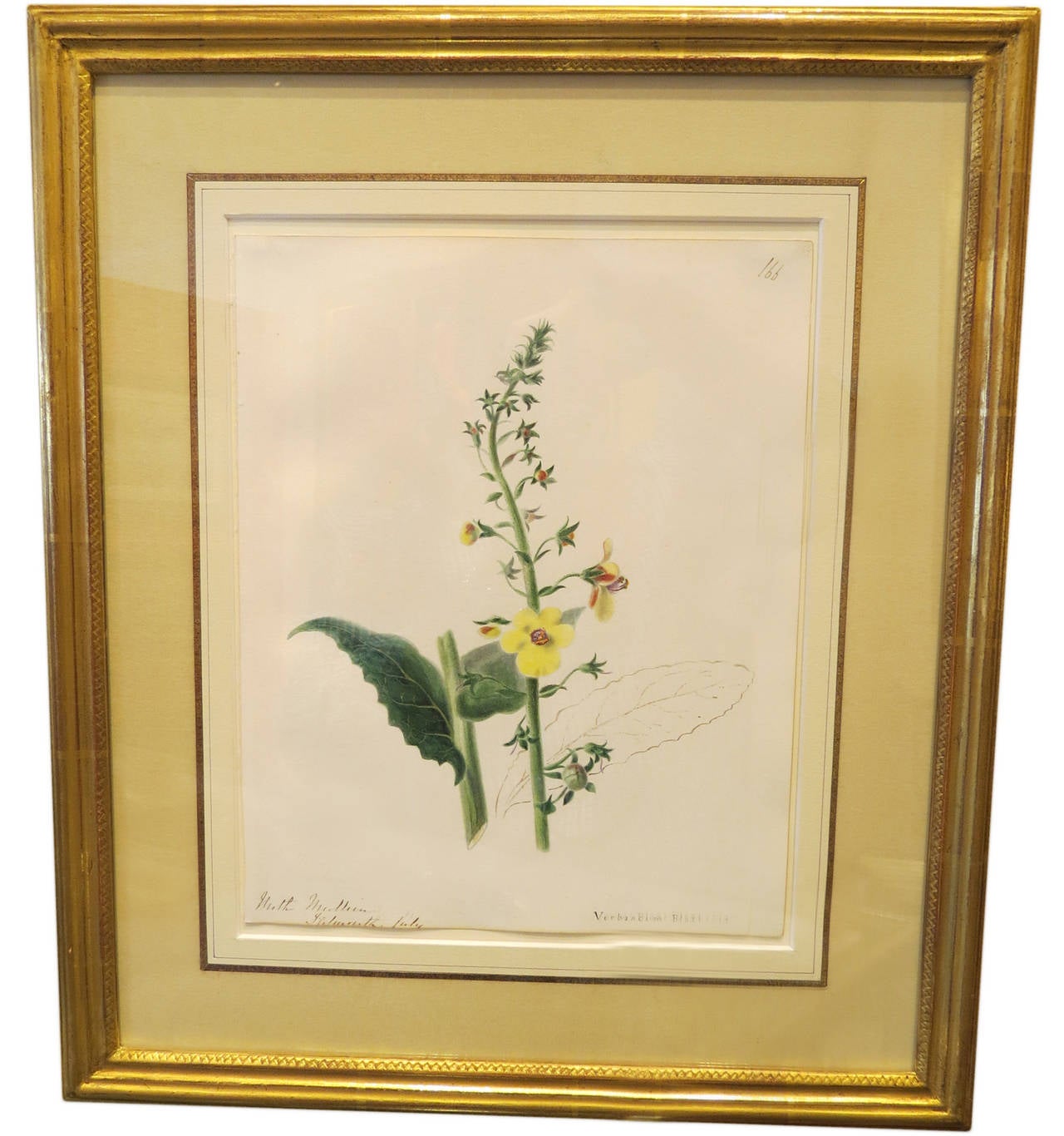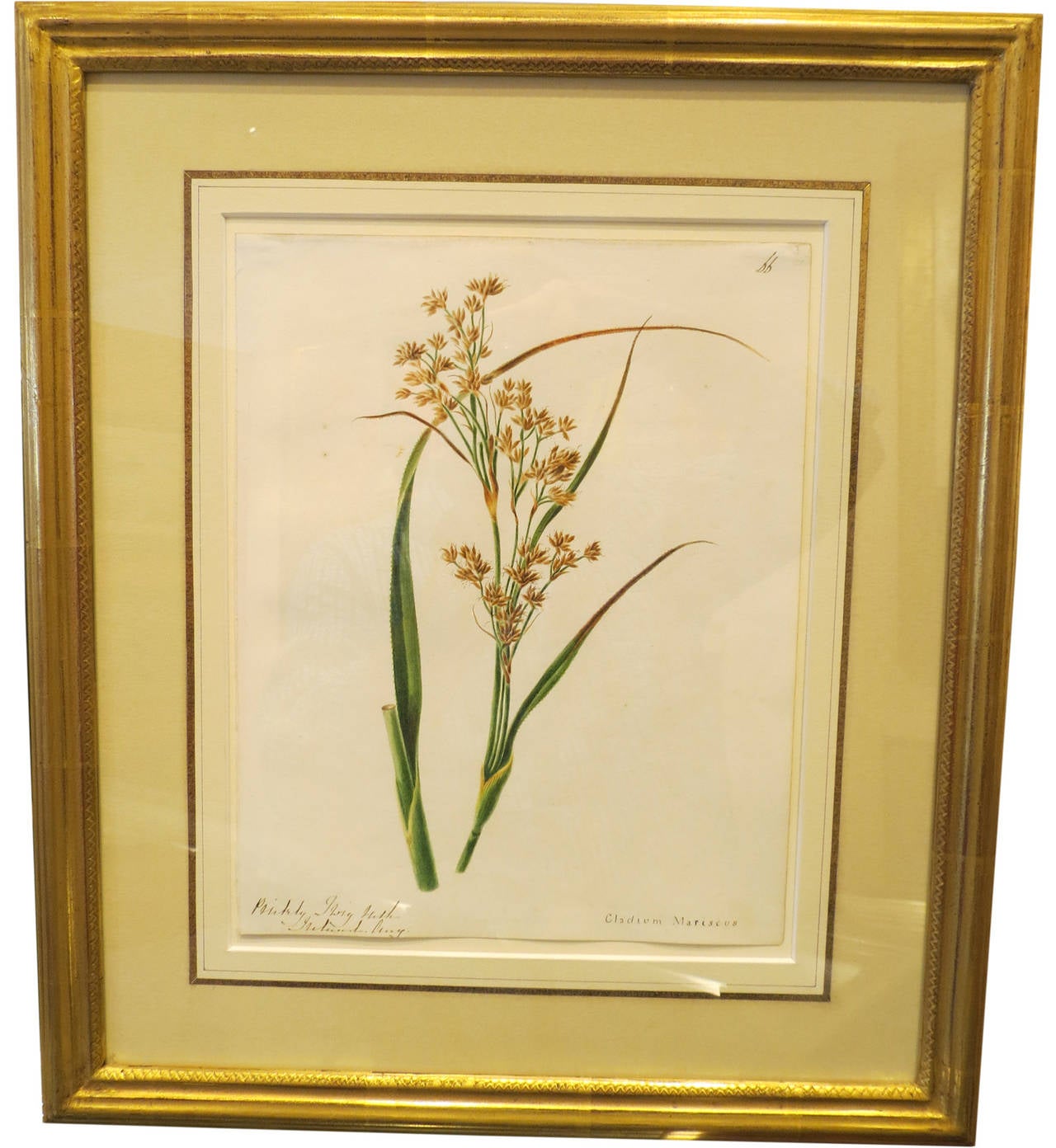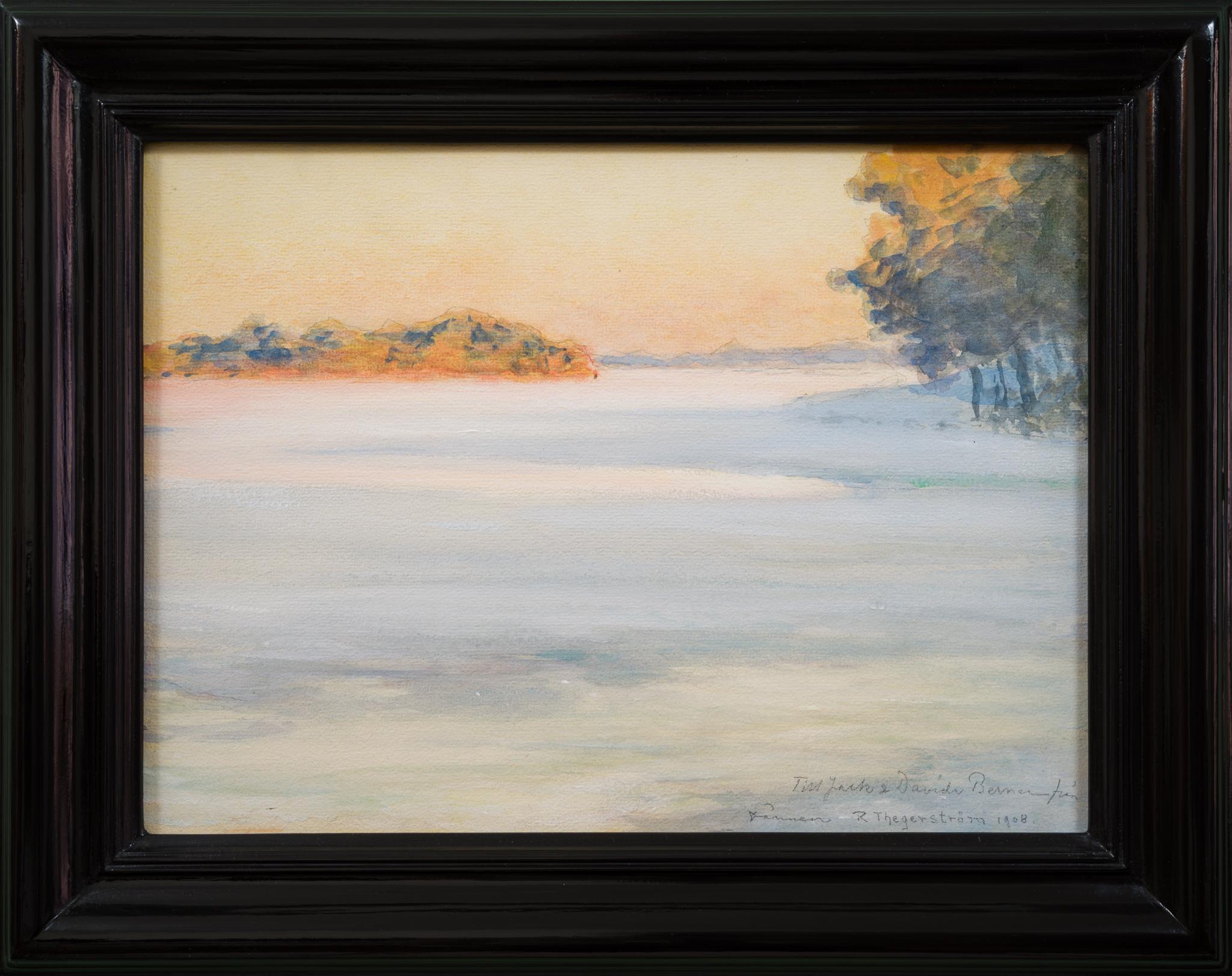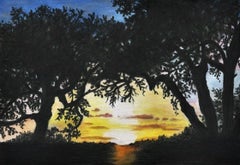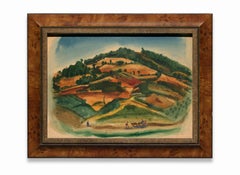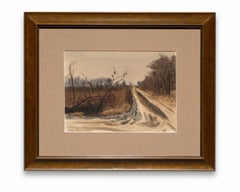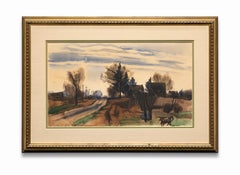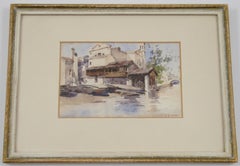
Ludovico Zambeletti (Italian, 1881-1966) Fishing boats Marine Water Colour Italy
View Similar Items
1 of 5
Lodovico ZambelettiLudovico Zambeletti (Italian, 1881-1966) Fishing boats Marine Water Colour Italy
About the Item
- Creator:Lodovico Zambeletti (1881 - 1966, Italian)
- Dimensions:Height: 7.09 in (18 cm)Width: 9.85 in (25 cm)Depth: 0.79 in (2 cm)
- Medium:
- Movement & Style:
- Period:
- Condition:The water colour is in good to excellent condition, with vibrant colours. The vintage frame shows usual, slight traces of wear and tear.
- Gallery Location:Meinisberg, CH
- Reference Number:Seller: ArPr BS_0_261stDibs: LU166829314412
Authenticity Guarantee
In the unlikely event there’s an issue with an item’s authenticity, contact us within 1 year for a full refund. DetailsMoney-Back Guarantee
If your item is not as described, is damaged in transit, or does not arrive, contact us within 7 days for a full refund. Details24-Hour Cancellation
You have a 24-hour grace period in which to reconsider your purchase, with no questions asked.Vetted Professional Sellers
Our world-class sellers must adhere to strict standards for service and quality, maintaining the integrity of our listings.Price-Match Guarantee
If you find that a seller listed the same item for a lower price elsewhere, we’ll match it.Trusted Global Delivery
Our best-in-class carrier network provides specialized shipping options worldwide, including custom delivery.You May Also Like
Hill Country Sunset
Located in Boston, MA
Artist Commentary:
Thanksgiving sunset in the Texas Hill Country.
Keywords: Landscape
Artist Biography:
Judith grew up 15 miles north of Milwaukee in t...
Category
21st Century and Contemporary Naturalistic Landscape Drawings and Waterc...
Materials
Watercolor, Paper, Pencil
Charles Culver Watercolor Landscape "Red Hills Near Patzcurao" Signed & Dated
Located in Detroit, MI
The idyllic atmosphere of this Mexican scene is located in Mexico, west of Mexico City and south of Guadalajara. “Red Hills Near Patzcuaro” is set in a golden light. and was one of three paintings by the artist while the artist visited Patzcuaro, Mexico. The humans depicted lend an atmosphere to the painting and an indication of location - dressed in native Mexican peasant dress - without being obtrusive and causing the viewer to concentrate on them. The intense red hills of Patzcuaro are the feature in this painting along with the pinon and juniper trees and the Chamisa shrub. This piece has been professionally reframed with acid-free matting and museum glass.
In a 1952 Detroit Free Press article, entitled “Artist Explains His Work,” Culver was asked why he painted the way he did. He stated: “I try to ‘see’ though not too exactly; I try to think though not too ponderously; I feel emotion yet I try not to become overwrought. I interpret rather than describe, and design rather than depict. I work with values, not light and shade; hence, when I am successful, I achieve substance rather than three-dimensional form, and this satisfies me as being wholly sufficient. In my work I wish to be serious without becoming a bore, exuberant without being frivolous, humorous without being silly. I believe that good paintings are conceived, not contrived; and I am interested in art much more than in pictures.”
Charles Culver...
Category
1940s Naturalistic Landscape Drawings and Watercolors
Materials
Paper, Watercolor
Charles Culver Landscape Winter Road Watercolor Signed & Dated
Located in Detroit, MI
The idyllic atmosphere of this country scene falls within a couple of styles one being regionalism, an American realist modern art movement that included paintings, murals, lithographs, and illustrations depicting scenes of rural and small-town America primarily in the Midwest and frequently associated with Grant Wood and Thomas Hart Benton. The other style is romanticism wherein the scene depicted is a more desired or dramatic version of what actually is. “Untitled (Winter Road)” is a quiet country scene depicting a road leading into the distance either going to or coming from a local farm. The snow does not particularly seem fresh suggesting a melt and the coming of spring.
This piece has been professionally reframed with acid-free matting and conservator glass.
In a 1952 Detroit Free Press article, entitled “Artist Explains His Work,” Culver was asked why he painted the way he did. He stated: “I try to ‘see’ though not too exactly; I try to think though not too ponderously; I feel emotion yet I try not to become overwrought. I interpret rather than describe, and design rather than depict. I work with values, not light and shade; hence, when I am successful, I achieve substance rather than three-dimensional form, and this satisfies me as being wholly sufficient. In my work I wish to be serious without becoming a bore, exuberant without being frivolous, humorous without being silly. I believe that good paintings are conceived, not contrived; and I am interested in art much more than in pictures.”
Charles...
Category
1940s Naturalistic Landscape Drawings and Watercolors
Materials
Paper, Watercolor
Charles Culver Landscape "Late Afternoon Landscape" Watercolor on Paper
Located in Detroit, MI
“Late Afternoon Landscape” is set in the golden light of evening painted in the mid-west town of Utica, Michigan. It has the atmosphere of when work is done and peace and quiet blanket the countryside. The The farm machinery has ceased its racket as has the family dog wandering about for one last sniff. This piece has been professionally reframed with acid-free matting and conservative glass.
In a 1952 Detroit Free Press article, entitled “Artist Explains His Work,” Culver was asked why he painted the way he did. He stated: “I try to ‘see’ though not too exactly; I try to think though not too ponderously; I feel emotion yet I try not to become overwrought. I interpret rather than describe, and design rather than depict. I work with values, not light and shade; hence, when I am successful, I achieve substance rather than three-dimensional form, and this satisfies me as being wholly sufficient. In my work I wish to be serious without becoming a bore, exuberant without being frivolous, humorous without being silly. I believe that good paintings are conceived, not contrived; and I am interested in art much more than in pictures.”
Charles Culver...
Category
1940s Naturalistic Landscape Drawings and Watercolors
Materials
Paper, Watercolor
"Untitled (Dock Scene)" Watercolor on Paper, Local Scene, Buildings, Water
Located in Detroit, MI
The idyllic atmosphere of this local dock scene falls within a couple of styles one being regionalism, an American realist modern art movement that included paintings, murals, lithographs, and illustrations depicting scenes of rural and small-town America primarily in the Midwest and frequently associated with Grant Wood and Thomas Hart Benton. The other style is romanticism wherein the scene depicted is a more desired or dramatic version of what actually is. “Untitled (Dock Scene)” is typical of a small town dock scene from Michigan where Culver lived or from places as far away as Maine, but what makes it important is its easy familiarity: water, gulls or terns, slanting wood shanties, scruffy dirt patches and course grasses. It is not idealized, but does set the tone of fresh air, the scream of birds and the sun on water. This piece has been professionally reframed with acid-free matting and museum glass.
In a 1952 Detroit Free Press article, entitled “Artist Explains His Work,” Culver was asked why he painted the way he did. He stated: “I try to ‘see’ though not too exactly; I try to think though not too ponderously; I feel emotion yet I try not to become overwrought. I interpret rather than describe, and design rather than depict. I work with values, not light and shade; hence, when I am successful, I achieve substance rather than three-dimensional form, and this satisfies me as being wholly sufficient. In my work I wish to be serious without becoming a bore, exuberant without being frivolous, humorous without being silly. I believe that good paintings are conceived, not contrived; and I am interested in art much more than in pictures.”
Charles Culver...
Category
1940s Naturalistic Landscape Drawings and Watercolors
Materials
Watercolor, Paper
Where Wild Hibiscus Grows, Absecon Island, NJ, Watercolor of Jersey Shore 1894
Located in Philadelphia, PA
Peter Caledon Cameron
(American, born Scotland, 1852-c. 1920)
Absecon Island, New Jersey, 1894
Watercolor on paper, 17 1/2 x 27 inches (sight)
FRAMED: 26 1/2 x 36 1/2 inches
Signed and dated at lower left: "ABSECON.ISLAND./ N.J-U.S.A Cameron/1894" N.J-U.S.A Cameron/1894"
Born in Perth, Scotland, Peter Caledon Cameron won awards for drawing and penmanship at a Glasgow public school. He claimed that at the age of fourteen his watercolors were already "in demand," and that before turning twenty he had "crossed every ocean in the world, sketching and painting as he went." He attended the Government School of Design in London and was certified as an art master in 1883. Cameron immigrated to the United States that year, settled in Philadelphia, and commenced work on large history paintings such as Niagara in Winter (unlocated) and Vesuvius in Grand Eruption (unlocated) that he exhibited in various northern cities. He exhibited one painting at the Pennsylvania Academy of the Fine Arts in 1902. Nothing is known of his activities later in life.
In a lengthy inscription that accompanies this watercolor, Cameron noted that Absecon was "a piece of the best sand-dune region characteristic of the whole coast of New Jersey State from Sandy Hook point in the North to Cape May Point in the extreme south." This was one among a number of studies the artist made for a large oil painting titled "Captain Kidd Burying His Treasure" (unlocated). The famous Scottish privateer Captain William Kidd...
Category
1890s Naturalistic Landscape Drawings and Watercolors
Materials
Paper, Watercolor
Recently Viewed
View AllMore Ways To Browse
Antique Fishing Boat Painting
Customs Declaration
Extra Large Antique Painting Frame
Palm Photography
Blue Man
French Street Sign
Original Political Art
New Lander
Portrait Painting Of Man
Yellow Sculpture
Mid Century Modern Art Original
Gallery Mirror
Silver Gelatin New York
Abstract Trees
Southern Landscape
Twenty First
1960 Still Life
Paintings Of Boats

